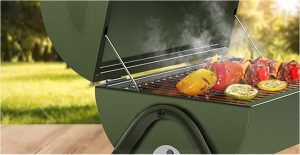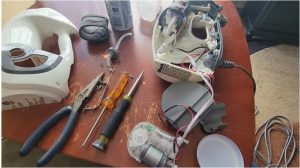Steam Radiator Not Getting Hot! Causes and Their Fixes
A steam radiator not getting hot is often due to a malfunctioning steam valve or air trapped in the system. This issue can affect both the warmth and overall efficiency of your heating system.
Steam radiators not getting warm is a common problem faced by many homeowners. This issue can stem from a variety of causes, including a faulty radiator steam valve or a blockage in the system. Identifying the root cause is the first step toward resolving the issue.
Steam boiler radiators not getting hot is a similar issue. This could be due to a problem with the boiler itself or a malfunction within the radiator. Regular maintenance and timely repairs can help prevent such issues and ensure your heating system works efficiently.
Two pipe steam radiators and one pipe steam radiator can both experience heating issues. The former has separate pipes for steam supply and condensate return, while the latter uses a single pipe for both. Understanding the type of radiator system you have can help in diagnosing the problem.
The position of the steam radiator valve, whether open or closed, can significantly affect the heating efficiency of your radiator. A closed valve can prevent steam from entering the radiator, causing it to remain cold.
Knowing how to bleed a steam radiator can be a handy skill. This process involves releasing trapped air from the radiator, which can often restore its heating efficiency and resolve common heating issues.
how steam radiators work?
Steam radiators are a type of heating system that utilizes steam’s natural ability to distribute heat. They consist of a boiler, pipes, and radiator units. The boiler heats water until it turns into steam.
This steam then travels through the pipes and into the radiators. The heat from the steam warms up the radiator units, which in turn heat the surrounding air. As the steam cools, it condenses back into water and returns to the boiler to be reheated.
This cycle continues, providing a consistent source of warmth. The efficiency of steam radiators makes them a popular choice for heating in many homes and buildings.
Steam Radiator Not Getting Hot: Causes and Their Fixes
1. Blocked or Closed Valve
A common cause of a steam radiator not getting hot is a blocked or closed valve. This can occur due to debris buildup or a valve that has been manually shut. The valve is the gateway for steam to enter the radiator, and if it’s blocked or closed, the steam cannot reach the radiator to heat it.
Fixes
To rectify this issue, first, ensure the valve is open. If the valve is open and the radiator is still not heating, it may be blocked. In this case, it may be necessary to clean or replace the valve. Always remember to turn off the heating system before attempting any repairs.
2. Airlock in the Radiator
An airlock in the radiator can also prevent it from getting hot. Air can become trapped in the radiator, preventing steam from filling it and thus, stopping it from heating up.
Fixes
To fix an airlock, you’ll need to bleed the radiator. This involves opening the bleed valve to let out the trapped air. Once the air is released, steam can fill the radiator and it should start heating up. Always use caution while bleeding a radiator to avoid burns from hot steam or water.
3. Inadequate Boiler Pressure
Inadequate boiler pressure is a less common, yet possible reason for a steam radiator not getting hot. If the boiler pressure is too low, it may not be able to push steam into the radiator.
Fixes
To fix this issue, you’ll need to increase the boiler pressure. This can usually be done by adding more water to the system. Always consult the boiler’s manual or a professional to ensure you’re adjusting the pressure correctly.
4. Faulty Thermostat
A faulty thermostat can also cause a steam radiator not to get hot. If the thermostat is not working correctly, it may not signal the boiler to produce steam.
Fixes
To fix a faulty thermostat, it may need to be replaced. Before doing so, ensure it’s set to the correct temperature and that its batteries (if it has any) are working. If these checks don’t solve the problem, consider consulting a professional for replacement.
5. Insufficient Insulation
Insufficient insulation can cause a steam radiator not to feel hot. If the surrounding area is not well insulated, heat from the radiator can be lost to the environment, making it feel less warm.
Fixes
To fix this issue, consider adding more insulation to the area around the radiator. This can help to keep the heat in and make the radiator feel hotter. Always ensure that any insulation used is safe for high temperatures.
Learn More: How To Fill With Water And Use A New Rowenta Handheld Steamer
Improper Radiator Slope or Alignment
Causes and Fixes for Improper Radiator Slope or Alignment
A steam radiator not getting hot can also be caused by improper slope or alignment. Steam radiators rely on gravity to ensure that condensed water (condensate) flows back to the boiler efficiently. If the radiator is not sloped correctly, condensate can accumulate inside the radiator, blocking steam from entering and heating it properly. This issue is particularly common in older homes where the radiator or piping may have shifted over time.
Causes of Improper Slope or Alignment
Settling of the House or Floor: Over time, the foundation of a house can settle, causing the floor to become uneven. This can tilt the radiator in a way that disrupts the proper flow of condensate.
Incorrect Installation: If the radiator was not installed with the correct slope initially, it may not function as intended.
Physical Damage or Shifting: Radiators or pipes can shift due to physical impact, renovations, or wear and tear, leading to misalignment.
Fixes for Improper Slope or Alignment
Check the Radiator Slope: Use a level to determine if the radiator is tilted correctly. Steam radiators should slope slightly toward the steam inlet pipe to allow condensate to drain back to the boiler.
Adjust the Radiator Legs: Most radiators have adjustable legs or feet. Use a wrench to raise or lower the legs until the radiator is properly sloped.
Shim the Radiator: If the floor is uneven, use shims (thin pieces of wood or metal) under the radiator legs to achieve the correct slope.
Inspect and Adjust Piping: Ensure that the pipes connected to the radiator are also properly aligned. If the pipes are sagging or misaligned, they may need to be repositioned or supported with pipe hangers.
Consult a Professional: If the issue persists or you’re unsure how to adjust the slope, consult a heating professional. They can assess the system and make necessary adjustments to ensure proper alignment.
Preventive Measures
- Regularly inspect the radiator and piping for signs of shifting or misalignment.
- Address any foundation or floor issues in your home that could affect the radiator’s slope.
- During installation or replacement, ensure the radiator is sloped correctly according to manufacturer guidelines.
FAQs
What is a steam radiator?
A steam radiator is a type of heating system that uses steam to distribute heat. The boiler heats water until it turns into steam, which then travels through pipes to the radiators, heating them up.
Can my radiator be too hot in one room?
Yes, a radiator can be too hot in one room. This could be due to a faulty thermostat, poor insulation, or an imbalance in the heating system. It’s advisable to seek professional help to rectify this issue.
Why is my steam radiator hissing?
A steam radiator may hiss due to the release of air or steam through the vent. This is normal during heating. However, continuous hissing could indicate a problem such as a stuck vent or overfilled boiler.
How can I adjust the steam radiator vents?
To adjust steam radiator vents, you’ll need to turn the vent counter-clockwise to let out more air (which heats the radiator faster) or clockwise to let out less air (which slows down heating). Always be careful to avoid burns.
How do I use a steam radiator?
To use a steam radiator, ensure the valve is open so steam can enter. Adjust the vent to control the rate of heating. If the room gets too hot, you can partially or fully close the valve.
Does the steam radiator air valve need to be open or closed?
The steam radiator air valve should be open when the system is heating. This allows air to escape so steam can fill the radiator. Once the radiator is hot, the valve will automatically close to trap the steam inside.
How can I control the steam radiator heat?
You can control the steam radiator heat by adjusting the vent or the valve. Opening the vent more will increase heat while closing it will decrease heat. Similarly, opening the valve allows more steam in to increase heat, while closing it reduces heat.
Learn More: How To Fill With Water And Use A New Rowenta Handheld Steamer





